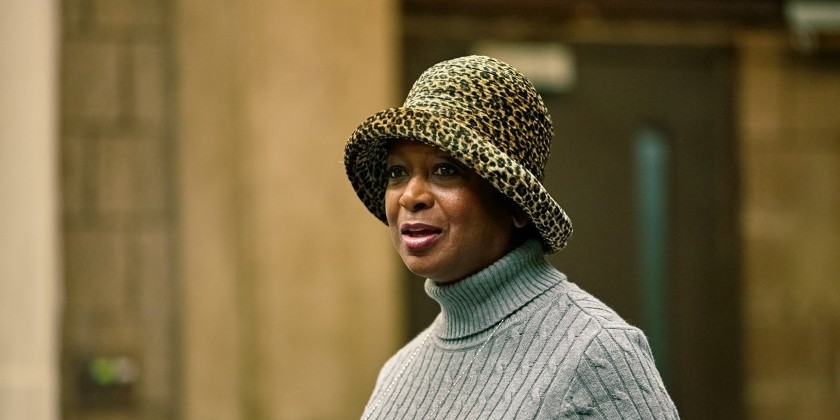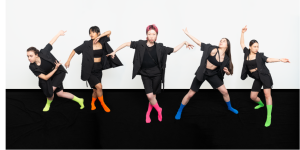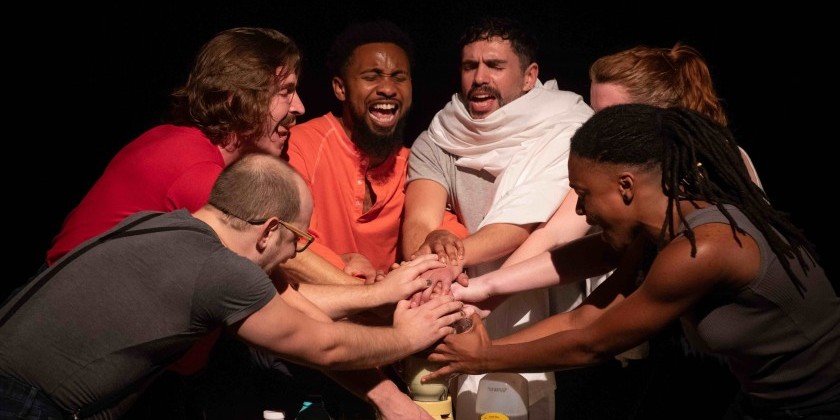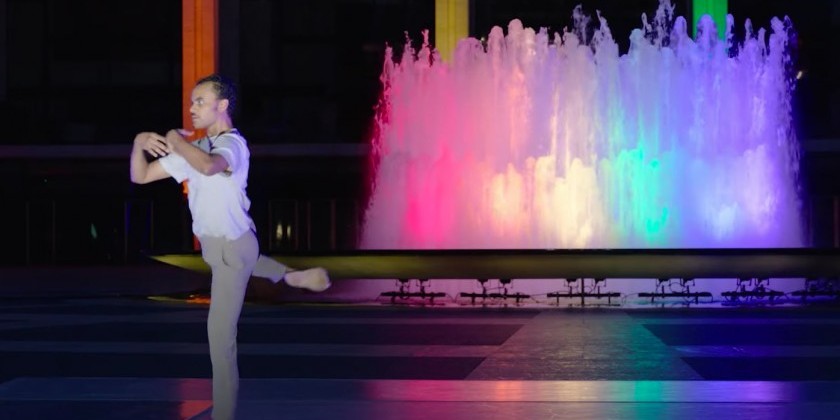Curator, Writer and Bessie Award Recipient Eva Yaa Asantewaa on Dance Writing, Arts Advocacy and "Lost and Found, the skeleton architecture, or the future of our worlds"

Film has the Oscars, television has the Emmys, and Broadway has the Tonys. Not be outdone, concert dance has the NY Dance and Performance Awards, affectionately dubbed the Bessies after beloved teacher Bessie Schönberg. While not as widely known as other awards, a Bessie is considered one of the highest honors an artist can garner. The awards were established in 1983 at Dance Theater Workshop (now New York Live Arts) to honor excellence in movement-based performance.
The Bessie Selection Committee presents and then votes on nominations in choreography, performance, music composition, and visual design. Everyone, though, can voice his, her, or their opinion by joining The Bessie League for ten bucks. Members of The Bessie League attend a roundtable in the spring and can suggest candidates for The Bessie Selection Committee.
While most of the winners will be revealed at the event, several recipients have already been announced. Abby Zbikowski received the Juried Bessie Award for her “rigorous and utterly unique development of an authentic movement vocabulary.” Will Rawls won The Bessie for Outstanding Emerging Choreographer for “creating astute, genre-eluding work.” Urban Bush Women founder Jawole Willa Jo Zollar will be presented with the Bessie Award for Lifetime Achievement, and writer Eva Yaa Asantewaa will be honored with the Bessie Award for Outstanding Service to the Field of Dance. The full list of nominees may be accessed here.
Hosted by James Whiteside and Shernita Anderson, The Bessies will take place on Monday, October 9 at New York University’s Skirball Center for the Performing Arts. In addition to the awards ceremony, attendees will enjoy performances by Jawole Willa Jo Zollar, the Trisha Brown Dance Company, and a musical tribute to Baba Chuck Davis performed by Abdel Salaam and Forces of Nature. Purchase tickets here.
Turning 65 has its perks. There’s reduced bus and subway fares plus that AARP membership, which brings discounts galore. For dance writer Eva Yaa Asantewaa, she can add the excitement of receiving a Bessie award for Outstanding Service to the Dance Community to her haul.
Yaa Asantewaa has been writing about dance for over four decades, accruing bylines at Gay City News, Dance Magazine, and The Village Voice. She perceives “a strong benefit in the field’s acknowledgment of a dance writer.” She says, “Documentation of and critical reflection on the art are essential to its development, to its visibility and its status in our society. The history of the arts in America must include the record of the labor and brilliance of America’s dance artists.”

Currently, Yaa Asantewaa can be found at InfiniteBody, the blog she founded in 1997. Although she often focuses on dance there, the personalized nature of blogging provides ample opportunity to explore other art forms and issues that spark her interest. “It gives me that freedom, as well as the freedom of writing however I want about the things that matter to me,” she says. There are drawbacks to blogging — namely the lack of an editor. “The downside is not having an editor’s careful eye on your work, but I’ve grown into a pretty kickass editor. Anyone who has submitted work to me for feedback or taken a writing workshop with me can tell you that!”
Yaa Asantewaa considers New York “her beat,” which makes choosing among the many tantalizing options challenging. “This season, I’ve been following a lot of artists of color — some whose work I know and others who might be new to me. I feel called to document and engage here, especially when I know there are other productions that will get wider attention,” she says. This September, she forwent reviewing Tanztheater Wuppertal Pina Bausch, a company she appreciates, in favor of seeing Maria Bauman, Nora Chipaumire, Faustin Linyekula, Yanira Castro, Dorothée Munyaneza, and Jess Pretty. “These artists fed me information, inspiration and energy I need on a personal basis and gave me things I need to communicate to my readers and to this field at this time.”
Although Yaa Asantewaa was not a professional dancer, she comes from a movement background, something she identifies as an asset to both her as a writer and the dance world at large. “Writers with embodied experience of dance . . . bring the value of that personal, embodied experience to their work. I also think there’s no one who just plain cares about dance as much as a dance artist. So, the whole field benefits when dance artists take up writing,” she says. She does issue a caveat. “Sometimes, insider knowledge and insider lingo and insider assumptions can stand in the way of effective communication with folks outside the field.”

Back (l to r) - Nia Love, Charmaine Warren, Paloma McGregor, Maria Bauman, Edisa Weeks, Ni'Ja Whitson, Marýa Wethers, Sidra Bell, Angie Pittman, Leslie Parker, Marguerite Hemmings
Front (l to r) - Melanie Greene, Kayla Hamilton, Marjani Forté-Saunders, Samantha Speis, Davalois Fearon, Rakiya Orange, Grace Osborne, Sydnie L. Mosley, Tara Aisha Willis, Jasmine Hearn, Eva Yaa Asantewaa
She articulates a vision of dance writing that will resonate with readers of and contributors to The Dance Enthusiast: “I like to think that anyone could read the words I choose, understand what I’m getting at and feel something for what I’ve experienced. Even if no one outside the field of dance, or arts in generally, is actually reading me — a strong possibility! — I want to write so that my work would connect with an outsider.”
In addition to receiving a Bessie, Yaa Asantewaa is excited — but not surprised — that the ensemble of her curated show for Danspace’s Platform 2016: Lost and Found, the skeleton architecture, or the future of our worlds, has been nominated for an Outstanding Performer award. “When the performance was over, I think everyone there realized that they’d seen a performance like no other,” she says. Featuring over twenty Black and gender nonconforming performers, the show was entirely improvisational. “I am more than ever in love with the idea of improvisation as ritual — of bringing together a batch of the most excellent ingredients and seeing what can happen in the moment. Right now, a lot of what I’m seeing artists of color and activist artists share with us are, in one form or another, rituals of deep healing.”
As for what’s next, Yaa Asantewaa plans to keep writing. She would welcome a chance to curate another performance. Even after forty years, she remains a strong advocate for the arts. “ . . . the arts fight back, and we need to fight back now more than ever. We stand up for the best of what it means to be human, and we will cede no ground to ignorance and oppression.”













